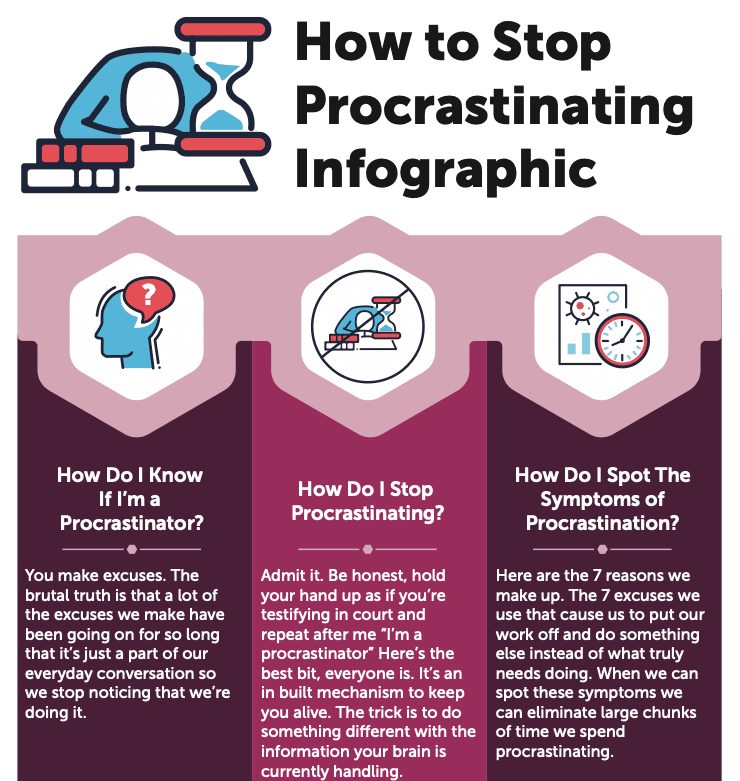32% of People Fall Asleep During a Presentation
Some poor idiot stands at the front with slides they have sweated blood perfecting, only to kill the whole thing by reading them.
If only he knew that people read 7 times quicker than he can speak. By the time he has read bullet point 1, the audience has finished reading all 7 bullet points and are now just waiting for him to catch up – Snooze time!
From school, think of a mnemonic that you used to remember something. Mine was ‘Naughty Elephant Squirted Water’ for the compass points. Let’s use the mnemonic P.R.E.S.E.N.T.I.N.G, which is 10 letters, to help us make presentations more rock & roll!
P.R.E.S.E.N.T.I.N.G
P is for Procrastination
We put presentations off because of ‘the tinkering effect’. If you start a presentation early, you will keep changing it, adding new images, etc. Don’t! Start, create the presentation until it is ‘Good Enough’. Then stop.

R is for Rewarding Stories
Think of a time when someone has told a story while presenting. You remembered it more than the graphs. Tell stories. It doesn’t need to be a 20-minute story. Stories are remembered 22 times more.
E is for End in Mind
Mohammed Ali, when he was training, saw Joe Frazier on the Canvas. He said in an interview that Joe Frazier would go down in round 5 with a left hook and Joe Frazier heard. This embedded in Joe Frazier’s mind and he went down in round 5. Share your end in mind with your audience at the start of your presentation.
S is for Sir Aristotle
‘Sir’ Aristotle’s technique for presenting was to tell them what you’re going to tell them, tell them, then tell them what you have told them. Also known as the Army Technique.
E is for Engaging Headlines
You read a newspaper and the thing that drawers your attention is the headline. Why? Because they are not boring. Use engaging headlines as titles.
N is for Nerves
Tell yourself, I am excited! This works because you can stay in a high energy state but just move from a negative to a positive high energy state. This has been researched by Molly Trainor, a psychology Masters student, and went viral on Tiktok.

T is for Targets
Setting a SMART target will clarify your ideas, focus your efforts, use your time and resources productively, and increase your chances of achieving what you want out of your presentation.
I is for Individual
If we only present in our preferred communicating style, we will only engage 25% of our audience. There are 4 people types; Future, Form, Feeling and Fact. Are you covering the four ‘F’s?
N is for No to PowerPoint
Don’t. Use anything else. Boards, A3 pages, the product, anything else…
G is for Grabbing our Audience
The first few minutes are crucial to grabbing your audience’s attention. If you start by thanking everyone for coming it’s not an attention grabber. Don’t.
For even more useful content on presenting, check out our ultimate guide on presentation skills.
Final Thoughts
So there we have it – 10 short and sweet tips on P.R.E.S.E.N.T.I.N.G that will help you to deliver the best presentation you can, with minimal nerves and far fewer snoozers!
Written by Darren A. Smith for The Grocer.




